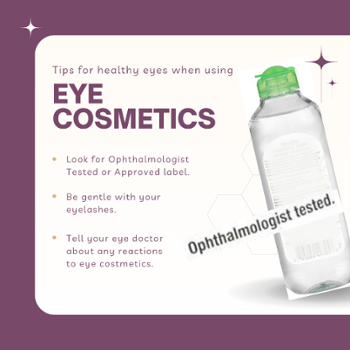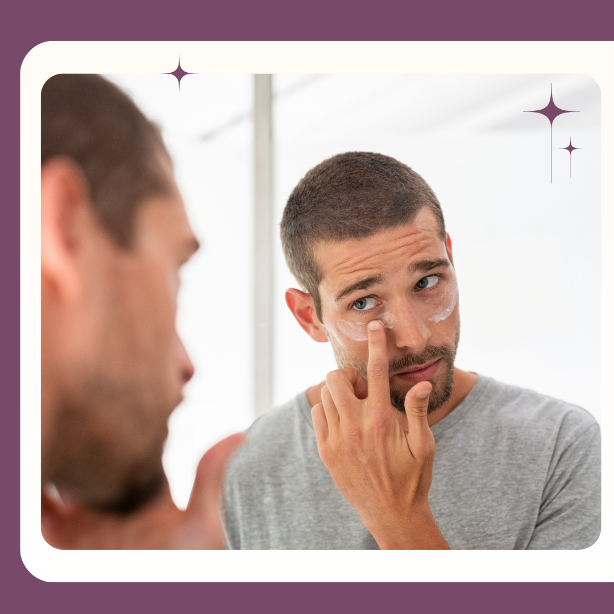Eye Cosmetics: The Importance of Preserving Eye Health
It can be confusing to understand the lingo of cosmetic products these days. The Rocky Mountain Lions Eye Bank knows the importance of eye health safety and shares things to look for on eye cosmetic labels for products used around the eyes.
By Ryea' O'Neill and Cynthia Witt, O.D. - February 6, 2025
There’s no sugarcoating it. It can be confusing to understand the labels and lingo of cosmetic products these days. The Rocky Mountain Lions Eye Bank (RMLEB) knows the importance of eye health safety. Understanding the meaning of cosmetic product labels helps to ensure you are accurately using the correct products, especially around the sensitive eye area.
The Sensitivity of the Cornea
The cornea is the clear outer part of the eye and is shaped like a contact lens. Have you ever wondered why you can feel the tiniest speck of dirt, eyelash, or scratch on your eye? The cornea is one of the most sensitive tissues in the body. There are hundreds of times more pain receptors in our cornea than there are in our skin! This is due to the high density of sensory nerve fibers that run through the cornea. The cornea’s sensitivity is important for reflex tear production and blinking – all important components to keeping our eyes healthy!
Understanding how sensitive your cornea is helps to realize the importance of using appropriate eye cosmetic products around the eye area.
Ophthalmologist Tested or Approved Labels
Eye cosmetics should be safe if used properly. You may have noticed in recent years a new label on products that are intended for use around the eye area. The ‘Ophthalmologist Tested’ or ‘Ophthalmologist Approved’ label indicates that a product has been tested by an ophthalmologist and is not likely to irritate the eye or its surrounding area if used according to the label instructions.
The FDA cautions that misusing eye cosmetics can allow dangerous bacteria or fungi to grow in them and cause an infection. They recommend not swapping or sharing cosmetics with others. There is also a regulation on the use of certain color additives for eye health concerns.
How to Avoid Corneal Abrasions
Here are some basic tips to keep your eyes healthy and avoid corneal abrasions when using eye cosmetics, thanks to advice from the American Academy of Ophthalmology and the U.S. Food & Drug Administration.
- Avoid products that contain harsh chemicals or that are not intended for use around the eyes.
- Look for the ‘Ophthalmologist Tested’ or ‘Ophthalmologist Approved’ labels on eye cosmetic products, which indicate the product has been tested for eye safety.
- Avoid using glitter or metallic products, especially if you wear contact lenses. Glitter cosmetics are a common cause of corneal abrasions as they can scratch your cornea or get trapped in between your cornea and the contact lens.
- If you develop an eye infection, immediately replace all your eye cosmetics, and do not use any eye cosmetics until the current infection is gone. Consult your eye doctor as well.
- Be gentle with your eyelashes. Eyelashes are important for keeping dirt and grime out of your eyes.
- Do not use anything sharp to try to separate your eyelashes. You could easily injure your cornea while trying to separate or clean your eyelashes with a sharp tool.
- If you have any kind of allergic reaction to an eye cosmetic:
- Let your doctor know.
- Keep the product so you can look for the same ingredients in other products.
- Do not add new products until you are sure what you are reacting to.
- Consider filing a report with the FDA about your reaction.

Treatment for Corneal Abrasions
The worst-case scenario has happened. You’ve used an eye cosmetic that caused a corneal scratch or abrasion. Your eye is red, and it feels like something is stuck in it. It’s watering and your vision is blurry. It is downright painful! What do you do?
First, call your eye doctor. They will look at your cornea with an instrument called a slit lamp. This is the same instrument that RMLEB uses to qualify donated corneas for transplant. Your doctor will be able to see any scratches or cuts on your cornea’s surface. Depending on the severity of the abrasion, your doctor will recommend treatment.
The cornea’s epithelium layer helps it to heal quickly. When properly cared for, the cornea can heal a minor scratch within 24-36 hours. Epithelial tissue heals more rapidly than other tissues in the body. Your doctor may recommend wearing an eye patch over the injured eye or even eye drops to soothe the injured cornea.
Preserving Eye Health Can Lead to a Legacy of Sight
Preserving your eye health not only leads to a lifetime of healthy eyes and the ability to see things with family and friends. It also means the potential to leave a legacy of sight for others.
RMLEB exists to restore hope when hope may have been lost.
A person who has lost sight due to a corneal blindness disease may not have hope. For the family whose loved one has passed, they may also have lost hope.
RMLEB holds space for both the donor and donor family who donate to help another in need. We honor their gifts and appreciate their selfless donation.
No matter how small, the ripple effect of their donated gifts can lead to a legacy of sight. Preserving your eye health can potentially lead to helping another overcome blindness through transplantation and research, the very mission of the Rocky Mountain Lions Eye Bank. By saying yes to eye donation, you can make a difference in another’s life and play a part in leaving a legacy of sight for others.
